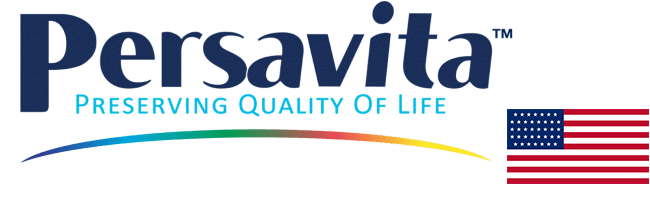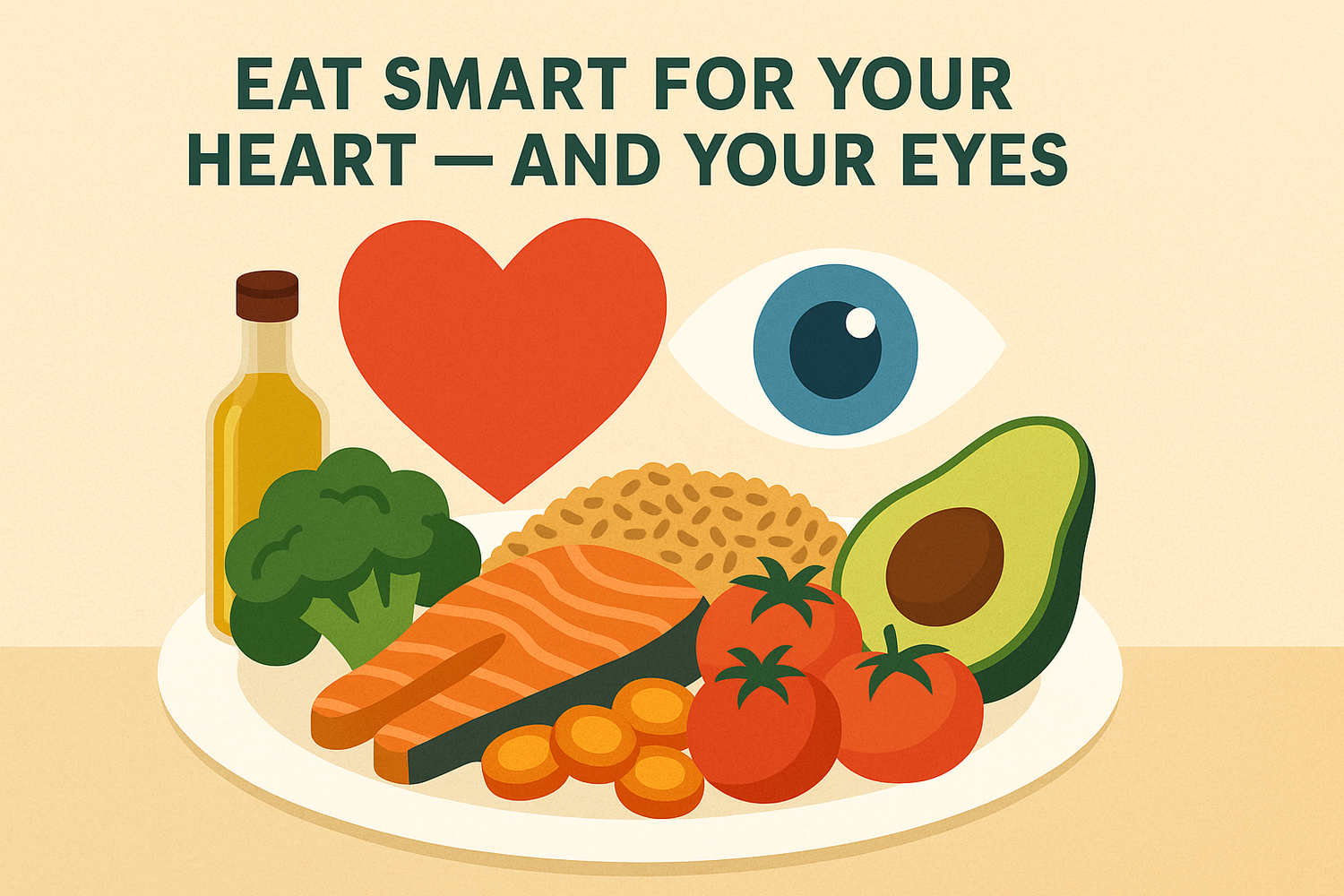Your heart and your eyes are more connected than you think. Discover how healthy eating habits that support cardiovascular wellness also help protect your vision and overall well-being.
❤️👁 The Connection Between Heart Health and Vision
Your heart and your eyes may seem like very different organs, but they share a common foundation: a strong, healthy network of blood vessels.
When your heart pumps efficiently and your blood vessels are healthy, oxygen and nutrients reach every part of the body — including the tiny capillaries of the retina, the light-sensitive tissue at the back of your eye.
The same dietary habits that promote cardiovascular health also nourish and protect the eyes, helping maintain clear, comfortable vision as you age.
The American Heart Association’s Life’s Essential 8 program identifies healthy eating as one of the eight most important pillars of lifelong cardiovascular health. And many of those same habits play a vital role in supporting eye health too.
🥦 The Foundations of a Heart-Healthy and Vision-Healthy Diet
1. Eat a Rainbow of Fruits and Vegetables
Each color brings unique antioxidants that help protect blood vessels and retinal cells from oxidative stress.
- Green foods (spinach, kale, broccoli) contain lutein and zeaxanthin — nutrients that help protect the macula, the central part of your retina.
- Orange and yellow foods (carrots, oranges, sweet potatoes) provide beta-carotene and vitamin C.
- Blue and purple foods (blueberries, blackberries, eggplant) are rich in anthocyanins, known for supporting vascular and cognitive health.
Tip: Fill half your plate with colorful fruits and vegetables for every meal.
2. Choose Whole Grains
Whole grains like oats, brown rice, quinoa, and barley help maintain steady blood sugar and cholesterol levels — two key factors that protect both the heart and the microcirculation of the eyes.
Refined grains, on the other hand, are digested quickly and can cause sugar spikes that contribute to inflammation and vascular stress.
Try this: Swap white rice for brown rice, and choose whole-grain bread or pasta for added fiber and long-term benefits.
3. Include Healthy Proteins
Lean proteins are essential building blocks for tissue repair and overall metabolic balance.
Choose plant-based proteins such as beans, lentils, chickpeas, and nuts, or lean animal proteins like fish, seafood, or skinless poultry.
Fish, in particular, is rich in omega-3 fatty acids, which support healthy circulation and may help protect the retina’s delicate membranes.
Tip: Aim to include fish or plant-based proteins at least twice a week.
4. Use Healthy Oils
Replace saturated and trans fats with plant-based oils such as olive, avocado, or canola oil.
These oils are rich in monounsaturated fats that help maintain healthy cholesterol levels and support vascular flexibility — a key factor for both heart and eye health.
Avoid: Coconut oil and palm oil, which are high in saturated fats and can increase LDL (“bad”) cholesterol.
5. Limit Salt, Sugar, and Processed Foods
High sodium and added sugars are major contributors to hypertension and vascular damage. The same blood vessels affected by these factors also nourish the retina.
Excess salt and sugar can lead to swelling, oxidative stress, and reduced oxygen supply in ocular tissues over time.
Choose wisely: Read nutrition labels, and pick options with less sodium, sugar, and saturated fat whenever possible.
6. Stay Hydrated
Water is essential for every cell in your body — including your eyes. Proper hydration supports tear film balance, ocular comfort, and optimal nutrient delivery to the retina.
Unsweetened tea or coffee can also fit into a healthy hydration routine.
Tip: Aim for 6–8 glasses of water daily and limit sugary or alcoholic drinks.
🧠 Why Eating for the Heart Also Supports the Eyes
Healthy eating doesn’t just reduce the risk of cardiovascular problems — it also supports the microcirculation that keeps your eyes nourished.
The retina and optic nerve depend on oxygen-rich blood flow from tiny capillaries. When those vessels remain flexible and clear, your visual cells receive the nutrients they need to function efficiently.
Conversely, diets high in sugar, salt, and unhealthy fats can damage these vessels over time — affecting both cardiovascular function and vision quality.
Eating smarter, therefore, is not just a heart-healthy choice — it’s a whole-body wellness strategy, including your eyes.
🌿 Saffron and Antioxidants: Supporting Everyday Vision
While healthy eating lays the foundation, specific nutrients such as saffron, resveratrol, and zinc provide targeted antioxidant support to the retina’s high-energy environment.
Saffron, in particular, has been studied for its role in maintaining visual function and protecting retinal cells from oxidative stress.
Saffron 2020 combines these clinically studied nutrients to complement your daily diet and help support your eyes as you age — naturally and safely.
🌞 The Takeaway: Eat Well, See Well, Live Well
Every meal is an opportunity to support your long-term health.
By choosing foods that nourish your heart, blood vessels, and eyes, you’re investing in energy, clarity, and quality of life — one plate at a time.
A heart-healthy diet is also a vision-healthy diet.
Eat colorfully. Cook simply. Protect your sight naturally.
References
- American Heart Association. Life’s Essential 8 – Eat Better. 2024. heart.org/lifes8
- Persavita Internal Review (2025). The Intertwined Relationship Between Age-Related Macular Degeneration and Cardiovascular Health.



Leave a comment
This site is protected by hCaptcha and the hCaptcha Privacy Policy and Terms of Service apply.